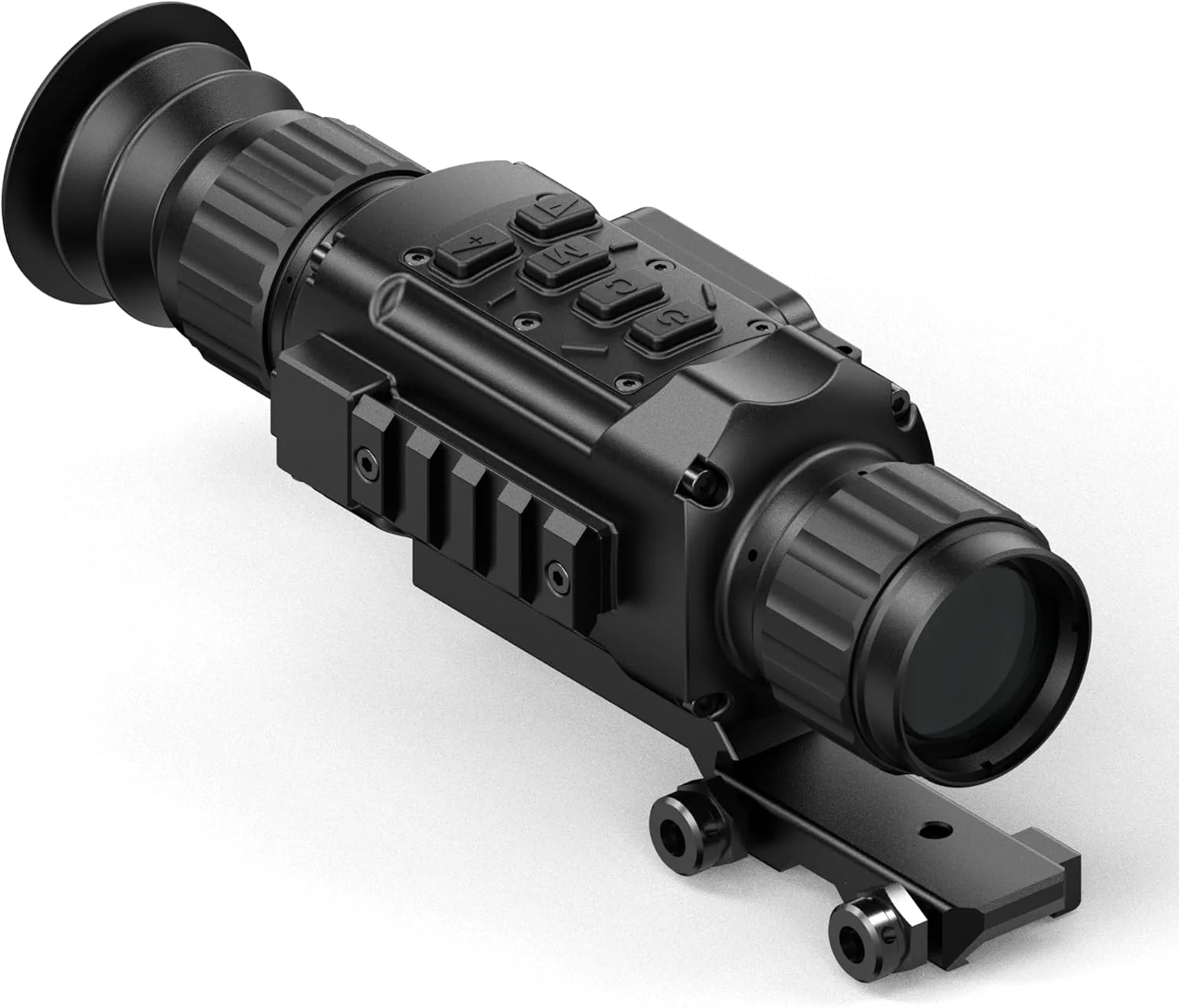Hunting at night or in low-visibility conditions has been completely transformed by affordable thermal technology. A quality Thermal Imaging Scope gives hunters the power to detect heat signatures through darkness, brush, and even light fog — all without relying on visible light. But you don’t need to spend a fortune to get reliable performance. This guide walks through what matters when choosing budget-friendly thermal optics and highlights the features to prioritize if you’re shopping for thermal scopes for hog hunting or browsing thermal scopes for sale.
Why a thermal scope beats traditional optics for many hunters
Traditional night-vision relies on reflected light; thermal detects emitted heat. That means animals are visible regardless of ambient illumination, and foliage or light cover often won’t hide a warm-bodied target. For hog hunters, who frequently operate in dense cover and at night, thermal can be a game-changer. Even on a tight budget, modern entry-level thermal units provide usable resolution, decent detection ranges, and intuitive user interfaces — enough to confidently identify and engage targets when conditions are tough.
Key features to prioritize on a budget
When money is tight, focus on the features that have the most practical impact in the field:
Sensor resolution and detection range
Sensor resolution directly affects image detail. On budget models you’ll find resolutions like 160×120 or 320×240. A 320×240 sensor offers visibly crisper outlines and is worth the extra cost if you can afford it. Detection range matters too: for many hog-hunting situations, reliable detection at 200–400 yards is sufficient. Read real-world user reports rather than marketing claims to gauge true performance.
Refresh rate and image lag
A higher refresh rate (e.g., 30Hz) produces smoother motion when tracking moving animals. Lower rates can cause choppiness, which is annoying when following running hogs. Aim for at least 25–30Hz if possible; many budget Thermal Imaging Scope options now hit that mark.
Optics and field of view
A wider field of view helps you scan quickly, while higher magnification aids identification at distance. Many budget units offer digital zoom; be aware that zooming on a thermal image reduces detail. Choose a balance: a medium magnification with a wider field of view is often the most versatile for hunting.
Battery life and power options
Hunting trips can be long; battery life matters. Check whether the scope uses replaceable batteries (easy in the field) or rechargeable packs. Some budget models support external power banks — a handy feature for extended outings.
Durability and weather resistance
Hunting gear needs to withstand moisture, dust, and impacts. Look for scopes with at least basic IP (water/dust) ratings and robust build quality. Even budget options vary widely here; read reviews on durability, not just technical specs.
Ergonomics and mounting
Comfortable controls, clear reticles, and straightforward mounting systems save time and frustration in the field. A user-friendly interface and reliable zeroing routines are surprisingly important — especially when cold or dark.
Best use cases for budget thermal scopes
Thermal scopes for hog hunting
Hogs are tough, fast, and often hide in brush. Budget thermal units are excellent for early detection of heat signatures as hogs move through cover. Use a thermal to scan likely travel corridors and then verify size and posture before committing. Even if a budget scope won’t provide military-grade resolution, its ability to reveal a hog’s presence and approximate location makes it invaluable for hog control.
Scouting and night-time observation
Beyond shooting, a thermal scope is perfect for scouting. You can survey fields, fence lines, and treelines to locate feeding patterns and entry points. Hunters with limited budgets often find that a modest thermal scope provides far more value per dollar for scouting than an expensive daytime optic.
Tips to get the most from a budget purchase
- Compare real-world reviews: Manufacturer specs can be optimistic. Look for field tests, hunter forums, and video demos that show performance at range.
- Buy from reputable sellers: Warranties and return policies matter. A reliable vendor can save you headache if the unit fails or underperforms.
- Practice with the scope before you hunt: Learn the control layout, reticle options, and how digital zoom affects clarity. Training in daylight on warm objects helps build familiarity.
- Use spotters and good shooting positions: A thermal scope detects animals, but shot placement and support still determine success. Combine tech with sound hunting fundamentals.
- Consider modular upgrades: Some budget scopes accept external power or have firmware updates. These can extend the utility of a lower-cost purchase.
What to expect from thermal scopes for sale at lower prices
When shopping thermal scopes for sale in the budget category, expect trade-offs: lower sensor resolution, simplified displays, and lighter build quality. That said, today’s market includes many models that deliver dependable performance for hunting and scouting without costing thousands. Typical budget-friendly retail ranges give you enough options to find a model with a balance of resolution, refresh rate, and battery life suited to your needs.
Final buying checklist
Before you click “buy”, run through this quick checklist:
- Does the sensor resolution match your detection needs (160×120 vs 320×240)?
- Is the advertised detection range realistic for your hunting context?
- What is the refresh rate, and is it adequate for moving targets?
- How long does the battery last, and can you easily replace or recharge it?
- Are there user reviews showing field performance in conditions similar to yours?
- Does the scope include a reliable warranty and good customer support?
Conclusion
A wallet-friendly Thermal Imaging Scope can be one of the best investments for hunters who operate in darkness or dense cover. While premium models boast better specs, budget thermal scopes for hog hunting and general night scouting now offer practical performance that makes them more than toys — they’re tools. By prioritizing sensor resolution, refresh rate, realistic detection range, and proven durability, you can find excellent thermal scopes for sale that will fit both your hunting needs and your budget. Happy hunting — and stay safe out there.

